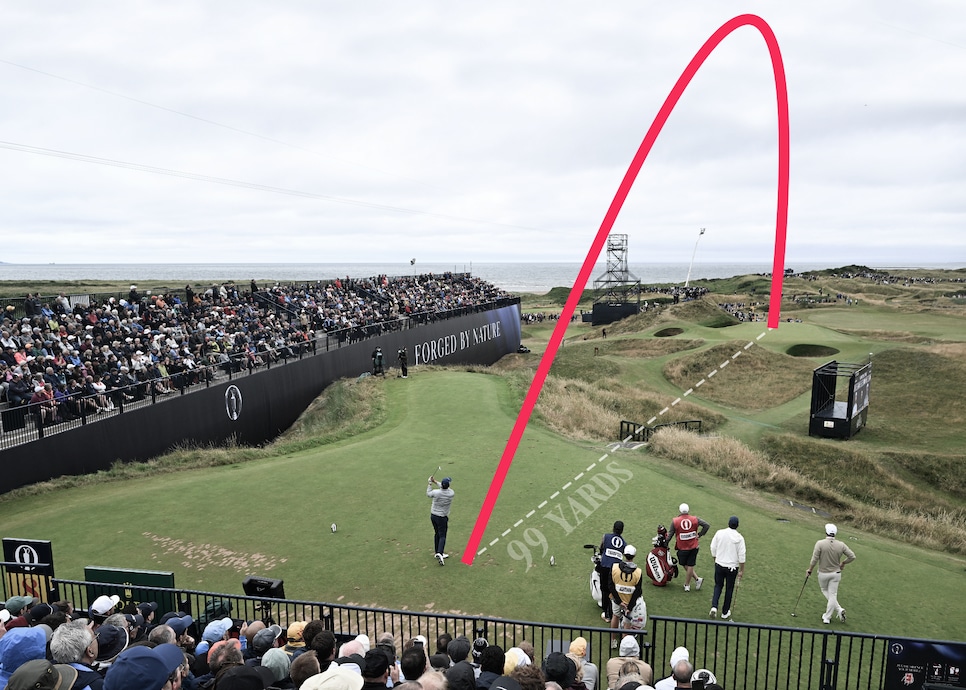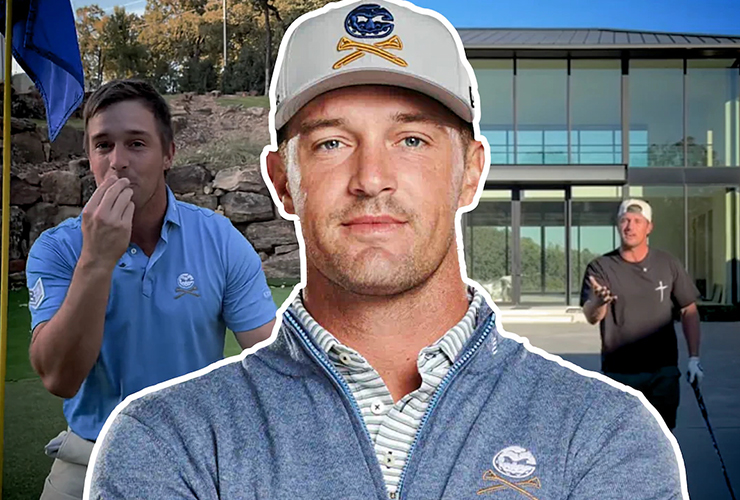So, he did it. Bryson DeChambeau completed his hole-in-one challenge. As the two-time major champion continues to dominate the world of online golf, I decided to dive deep into his challenge and analyze some of the numbers and data in his chase for the ace.
Before we get to the numbers, a quick introduction to Bryson’s pursuit (for those who won’t admit they were following it daily).
On Nov. 11, DeChambeau posted a video on his TikTok account of him attempting to hit a shot over his new house in Dallas into a hole on his backyard putting green. That shot finished three feet from the cup but started the challenge that saw millions of fans checking in daily on his progress.
Bryson decided that on Day 1 he would get one attempt, on Day 2 he would get two, and so on and so on, until he finally made his ace.
So how far was the shot?
Using Google Earth, I was able to precisely measure and work out that the shot Bryson was attempting to make was 97 yards. It played approximately 18 feet downhill, with the green set considerably below the level of his house. Taking into account the change in elevation, the shot played to an effective distance of approximately 91 yards.
To put that in a real-world example, you may remember the famous “Postage Stamp” eighth hole at Royal Troon from this year’s Open Championship. In the final round, the tee was moved up and the hole played just 99 yards.

Tom Shaw/R&A
That day, the hole played to an average score of 3.1 with no aces, 15 birdies and 17 bogeys or worse.
OK, so how close would the average tour pro expect to hit it from 97 yards?
Using ShotLink data, we can estimate that the PGA Tour average from 97 yards is around 19 feet. The best wedge players average closer to 15 feet.
In fact, World No. 1 Scottie Scheffler actually led the PGA Tour in 2024 in proximity from 100 to 125 yards, hitting to an average distance of 14.8 feet.

From 75 to 100 yards, Scheffler ranked second, averaging just 12.9 feet from the hole.
What were the chances of Bryson making an ace?
Generally speaking, a tour player’s odd of making a hole-in-one during a competitive round are around 1-in-2500 or .04 percent. For an amateur, that number increases to about 1 in every 12,000 attempts.
But this shot was just 100 yards. Golf statistics guru Lou Stagner estimated that probability of a tour player holing a shot from 100 yards in the fairway is likely 1-in-500.
That would suggest Bryson should have completed his challenge, on average, on Day 32.
But wouldn’t the odds be skewed because he is hitting the same shot on repeat?
Yes, that is true. Any pro, but especially Bryson, is likely to improve his or her distance control and accuracy with no variability in lie, pin position or shot distance.
For that reason, Stagner estimated the probability of Bryson making this shot was 1-in-175 or 0.6 percent.
Assuming that probability, Bryson should have completed the challenge on the 19th day.
When did Bryson actually complete the challenge?
On Nov. 27, Bryson finally made his hole-in-one. It was Day 16 of the challenge and it was his 134th attempt.
What a journey pic.twitter.com/iEQhu1KdwH
— Bryson DeChambeau (@brysondech) November 27, 2024
The challenge proved immensely popular on Bryson’s TikTok account. His 16 videos drew 81.4 million total videos views, an average of 5.2 million per video, and more than 7 million likes.
Over the 16 days of the challenge, Bryson grew his TikTok following by more than 450,000.
One last number for you in this hole-in-one challenge is one. That is, ironically, the number of aces Bryson has made in his professional career.
He did pick a good time and place for it, mind you. The 16th hole in the final round of the 2019 Masters.
Jumping for joy! @b_dechambeau cards his first ever hole-in-one. pic.twitter.com/rR5RX4AnbH
— The Masters (@TheMasters) April 14, 2019
Main Image: Supplied









